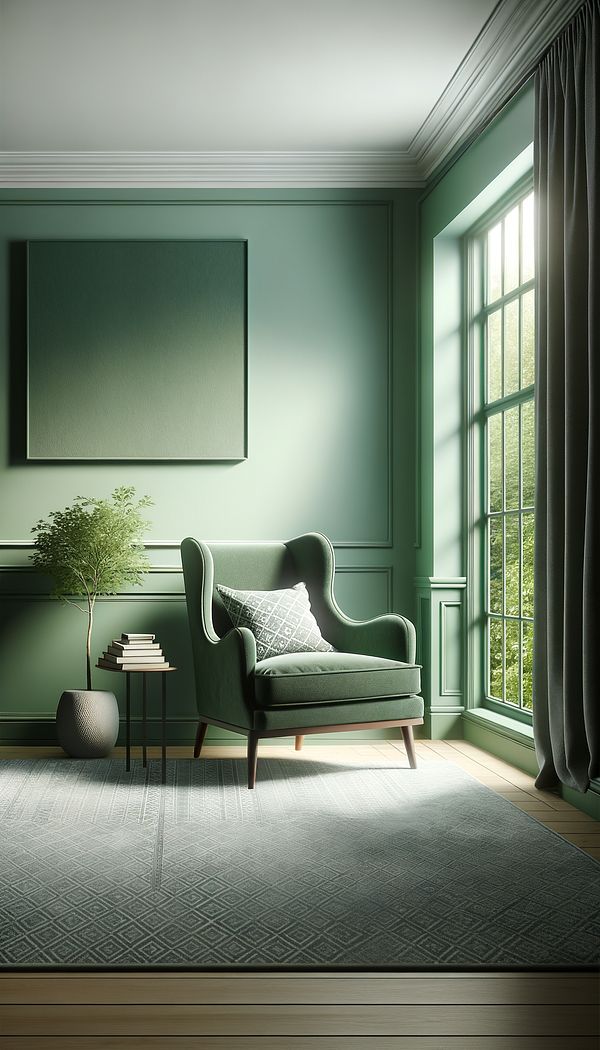What is Monochromatic?
Monochromatic refers to a color scheme that uses only one color.
Description
Monochromatic might sound like a single hue taking over a space, but it's much more than that. This design technique involves the use of one color, but in varying shades, tones, and tints. It’s a powerful tool in interior design, creating harmony and a cohesive aesthetic across a room or a home. By adjusting the saturation and brightness of a single base color, a monochromatic scheme can achieve a rich depth and variety, making spaces feel larger and more unified.
Implementing a monochromatic color scheme isn't limited to paint on the walls. It extends to fabrics, furniture, accessories, and lighting, allowing for a nuanced and sophisticated approach to design. The simplicity of a monochromatic palette also sets a serene and tranquil mood, potentially making it easier to design around. Moreover, it can serve as a solid foundation, where textures, patterns, and architectural elements come to the forefront, gaining more visual interest.
The beauty of going monochromatic lies in its versatility. Whether it’s a bold, vibrant hue making a dramatic statement or soft, pastel shades creating a calming oasis, the monochromatic approach adapts to various styles and preferences. Additionally, this approach highlights the importance of texture and pattern. Because the color variation is minimal, these elements become crucial in adding complexity and interest, preventing the space from appearing flat or monotonous.
Usage
In a living room, shades of blue might range from sky blue walls, navy sofas, and teal accessories for a dynamic yet cohesive look. In a more serene setting, different shades of white could be used across furniture, curtains, and rugs to evoke a sense of calm and purity.
FAQs
-
Can a monochromatic scheme work in any room?
Yes, a monochromatic scheme can be effectively applied to any room, regardless of its size or function. The key is in selecting a hue that complements the room's purpose and mood.
-
Is monochromatic design limiting?
While it might seem limiting at first, a monochromatic design allows for creative exploration of textures, patterns, and various shades, offering a broad range of design possibilities.
-
How do I choose the right color for a monochromatic scheme?
Consider the room's lighting, size, and function. Warm colors can create cozy spaces, while cool colors might enhance a sense of openness. Also, think about the mood you want to set. Soft pastels can create a calming atmosphere, whereas bold colors can make a statement.
Practical Application
Start with choosing a base color that resonates with the mood you aim to create. From there, explore lighter tints and darker shades of that color, and don't hesitate to mix different textures and patterns within the chosen palette to add depth and interest. Remember, lighting plays a crucial role in how colors appear, so consider both natural and artificial lighting when planning your design.
-
Decorative Techniques322 articles
-
Color & Patterns154 articles
-
Textiles & Upholstery252 articles
-
Wall Treatments & Finishes157 articles
-
Space Planning & Layout134 articles
-
Back OrderA back order is an order for an item that is temporarily out of stock.
-
StrippingStripping in interior design refers to the process of removing layers of paint, wallpaper, varnish, or other coatings from surfaces.
-
CauseuseA causeuse is a small sofa, typically designed to seat two people.
-
CockbeadingCockbeading is a decorative moulding used in fine cabinetry.
-
Rush SeatA rush seat is a type of chair seat made from woven rushes.
